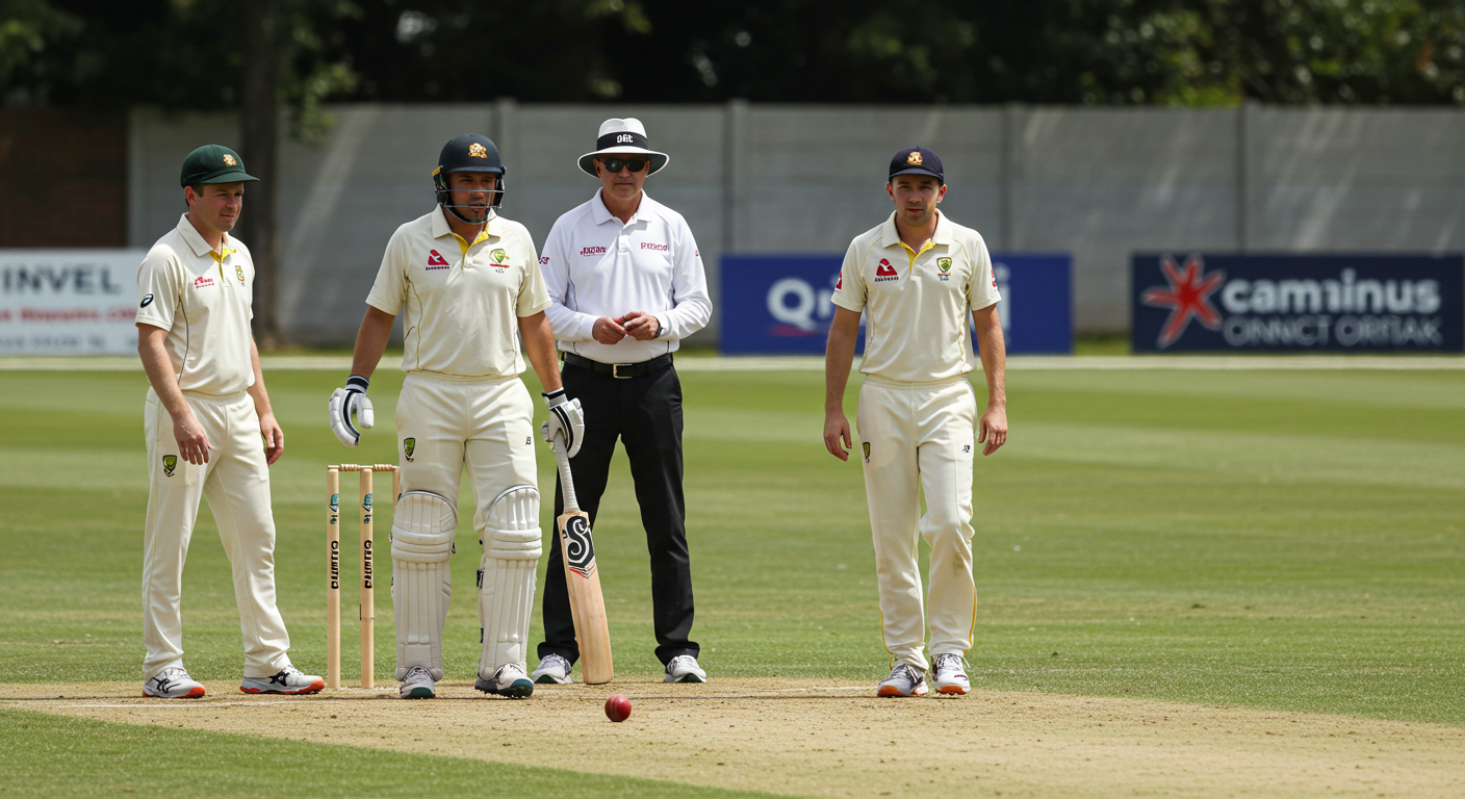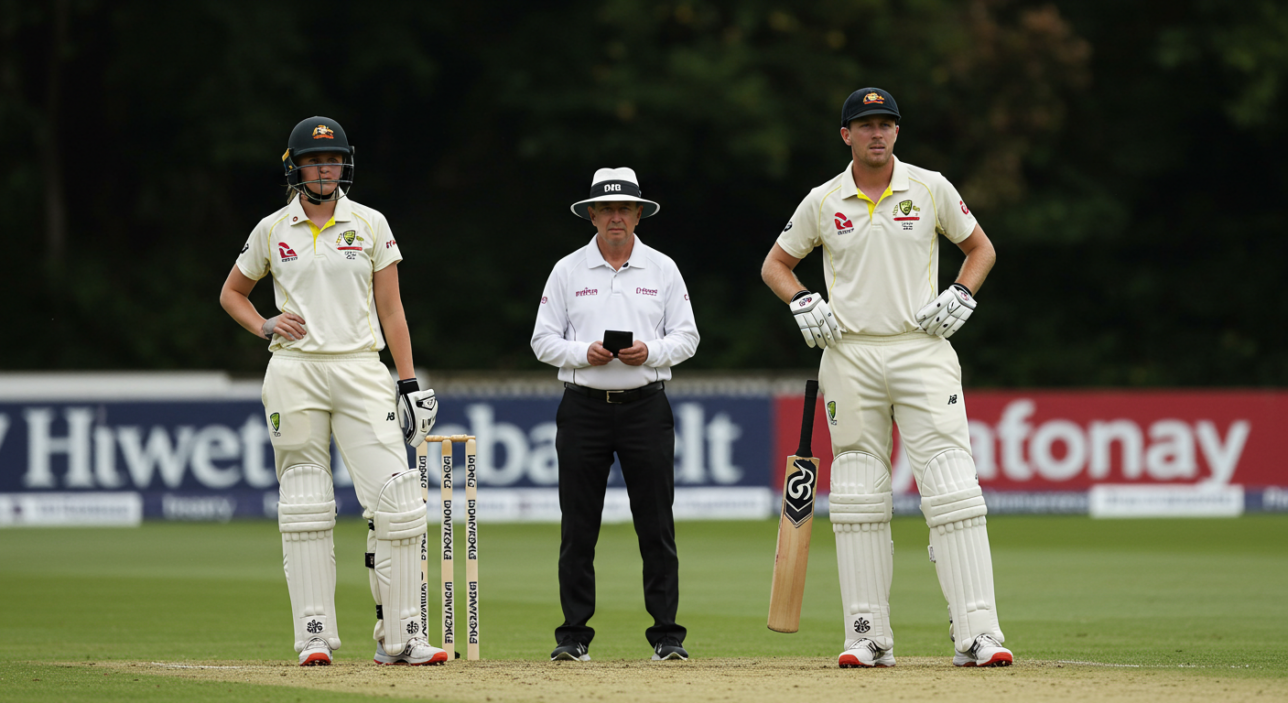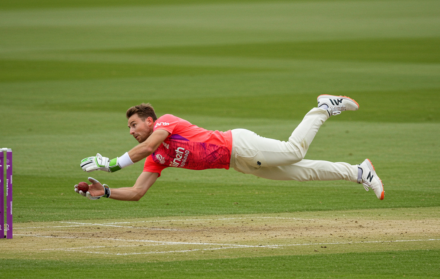
Why is cricket called a gentleman’s game?
Few sports are as often associated with integrity, etiquette, and tradition as cricket. For centuries, it has been described as “the gentleman’s game” — a title that evokes images of sportsmanship, mutual respect, and moral conduct on the field. But why is cricket called a gentleman’s game, and where does it come from?
The phrase is rooted in both cricket’s aristocratic origins and the conduct that has long been expected of its players. From rural village greens in England to the global arenas of modern international matches, cricket has preserved a strong sense of decorum and honor, even as the game itself has evolved.
This article explores how cricket came to be known as the gentleman’s game, its historical underpinnings, the behaviors that define its character, and how the spirit of cricket still plays a vital role in shaping the sport today.
Historical Origins of Cricket and Class Distinctions

To understand why cricket is called a gentleman’s game, one must first look at how the sport developed.
Cricket began in rural southeast England during the 16th century as a folk game played by farmers and laborers. However, by the 18th century, the upper classes had adopted the sport, and it became popular in English public schools such as Eton and Harrow. These elite institutions helped codify the early rules and promoted cricket as a game of character-building.
The “Gentlemen” and the “Players”
One of the most telling aspects of cricket’s class history is the divide between amateurs and professionals. From the early 19th century until 1963, English cricket maintained a formal distinction between the so-called “Gentlemen” (amateurs, often from privileged backgrounds) and the “Players” (paid professionals, usually working class).
These groups would even use separate dressing rooms and enter the field from different gates. The annual Gentlemen vs Players match at Lord’s became a symbolic fixture — a reflection of the English class system in sport.
Amateurs claimed to play for the love of the game, while professionals played for wages. This division reinforced the idea that cricket was, at its highest level, about honor, tradition, and dignity rather than material reward.
Codes of Conduct: The Spirit of the Game
Although cricket has a long and detailed rulebook, it is the unwritten rules — the spirit of cricket — that have contributed most to its image as a gentleman’s game.
The Marylebone Cricket Club (MCC), which for centuries served as the custodian of the Laws of Cricket, formally introduced the concept of the “Spirit of Cricket” in 2000. This idea emphasizes:
-
Respect for opponents
-
Respect for umpires and officials
-
Playing hard, but playing fair
-
Accepting defeat gracefully
These values are meant to guide behavior even in situations where the rules alone do not offer clear instruction. For example, not appealing for a dismissal you know is not out, or choosing not to run out a batter who trips accidentally — these acts may not be required by law, but they are expected by custom.
Cricket’s Role in the British Empire and Colonial Identity

As the British Empire expanded in the 18th and 19th centuries, so did cricket. It was introduced in India, Australia, the Caribbean, and parts of Africa and the Middle East. In many of these regions, cricket was promoted in schools and clubs as a way of instilling British values — discipline, teamwork, fairness, and respect.
Cricket was more than just a game. It was a tool of imperial culture, taught alongside English literature and Christian morality. Colonized elites often took to cricket with enthusiasm, using the sport as a way to both assimilate and later challenge colonial power.
Cultural Adoption and Local Identity
In India, cricket became a national obsession and a platform for resistance and pride. Players like Ranjitsinhji and C. K. Nayudu defied colonial hierarchies through their skill and presence on the field.
In the West Indies, cricket was used to celebrate black excellence and break racial barriers. Teams like the legendary 1980s Windies squad dominated the game while upholding a unique cultural flavor of their own.
Thus, while cricket was born in England, it became a global game — and the ideal of the “gentleman” was interpreted in many different cultural and political contexts.
Famous Examples of Gentlemanly Behavior
The phrase “it’s just not cricket” is often used in British English to describe behavior that is unfair or improper. This saying stems directly from the expectation that cricket should be played with honor.
Several moments in cricket history exemplify what it means to be a true sportsman:
1. Adam Gilchrist “Walking” in the 2003 World Cup
Australian wicketkeeper-batter Adam Gilchrist walked off the field without waiting for the umpire’s decision, even though the edge he had made was faint and not spotted by officials. His choice drew both praise and debate, but it upheld the spirit of fair play.
2. Andrew Flintoff Consoling Brett Lee
In the 2005 Ashes series, after a tense finish where England narrowly beat Australia, Andrew Flintoff immediately bent down to console a heartbroken Brett Lee. The gesture became an iconic image of respect between fierce competitors.
3. Kumar Sangakkara’s Sportsmanship
The Sri Lankan legend was known for his articulate advocacy of the spirit of cricket. On multiple occasions, Sangakkara would call back players wrongly given out or withdraw appeals that seemed unfair.
4. Rahul Dravid’s Entire Career
Nicknamed “The Wall”, Dravid was as much known for his ethics as for his technical brilliance. He often led by example, showing that grace under pressure and discipline were not signs of weakness but of strength.
Criticism and Controversy: Is It Still a Gentleman’s Game?

Despite the noble ideals associated with cricket, the sport has not been free from criticism. Many observers argue that the term “gentleman’s game” no longer applies, especially with the rise of sledging, commercialism, and scandals.
Match-Fixing Scandals
In the late 1990s and early 2000s, several high-profile match-fixing scandals rocked the cricketing world. Players like Hansie Cronje (South Africa), Mohammad Azharuddin (India), and later Mohammad Amir (Pakistan) were involved in corrupt practices. These incidents tarnished cricket’s image as a sport driven by ethics.
The notion of a gentleman’s game was challenged, especially when greed seemed to overpower integrity. Anti-corruption units were formed within the International Cricket Council (ICC) to safeguard the game’s future.
Sledging and On-Field Aggression
Sledging — the act of verbally intimidating or distracting an opponent — has long existed in cricket, especially between Australia and England during the Ashes. Some view sledging as part of competitive spirit, while others argue it erodes the very civility cricket is supposed to represent.
Players like Steve Waugh and Ricky Ponting defended “mental disintegration” as a legitimate tactic, but it raised questions about the limits of gentlemanly behavior. Today, sledging is more regulated, and repeated abusive behavior can lead to fines or suspensions.
Over-Commercialization
The growth of leagues like the Indian Premier League (IPL) has brought new attention, money, and viewership to the sport. While positive in many ways, some traditionalists feel that entertainment and sponsorships have overtaken sportsmanship.
Aggressive celebrations, player auctions, and excessive branding have changed the tone of the game. While passion is welcomed, the loss of decorum is often seen as a step away from the sport’s roots.
Modern Cricket and the Spirit Reimagined
In response to controversies, cricket’s governing bodies have worked to promote good conduct. The MCC’s Spirit of Cricket remains a cornerstone, included in preambles of rulebooks at all levels.
Captain’s Responsibility
Today, captains are expected not only to lead tactics but also to set the tone for fair play. The ICC Code of Conduct gives umpires and match referees authority to penalize teams for misconduct.
Captains like Kane Williamson, Faf du Plessis, and Eoin Morgan have earned praise for their gentlemanly behavior. They play with intensity but rarely cross the line.
Good Sportsmanship Still Exists
Despite a few bad apples, many modern cricketers continue to uphold the values associated with the sport. Notable examples include:
-
MS Dhoni often refused to appeal close calls when he believed the batter was not out.
-
Joe Root has been applauded for walking away from verbal spats, choosing performance over confrontation.
-
Pat Cummins, Australia’s current captain, is regarded as calm, respectful, and professional in his leadership style.
The Gentleman’s Game Beyond Gender

The phrase “gentleman’s game” has become outdated in one very important respect — it excludes half the population. Women’s cricket has grown rapidly in recent years, and players display the same levels of skill, fairness, and sportsmanship.
The values of respect, teamwork, and humility are not tied to gender. In fact, many women’s matches are known for their clean gameplay and positive attitude. Stars like Mithali Raj, Ellyse Perry, and Heather Knight exemplify grace and integrity both on and off the pitch.
Inclusive Ethics
Many cricket organizations now embrace gender-neutral terms and focus on character over titles. The phrase “Spirit of Cricket” speaks to all cricketers — not just men — who uphold the game’s highest values.
Why the Label Still Matters in Today’s Sports Culture
While cricket has its flaws, the idea of being a “gentleman’s game” continues to hold meaning. In a time when many sports are marked by aggression, diving, and unsportsmanlike conduct, cricket still attempts to lead by example.
A Benchmark for Other Sports
Football, rugby, and basketball are often fast-paced and emotional. Cricket, by contrast, requires players to maintain composure during long matches. Respect for opponents and umpires is written into the game’s rhythm.
Even when emotions run high, many players still shake hands, exchange jerseys, and show genuine appreciation for each other’s skill.
More Than Just a Game
Cricket remains a game of character, not just technique. The way players behave under pressure — whether by walking when they are out or calming teammates after a defeat — reflects the true values of the sport.
These traditions are passed down through generations and continue to define how cricket is taught and played.
Final Thoughts: A Game of Character, Not Just Skill

So why is cricket still called a gentleman’s game? The answer lies in its foundations — built on respect, fairness, and integrity. While the game has evolved, and while it is played by people of all genders and backgrounds today, these core values remain central.
The sport has weathered its share of controversies, yet continues to demand high standards from its players and fans alike. It is not just about who scores the most runs or takes the most wickets. It is also about how the game is played.
In a world that often celebrates winning at any cost, cricket reminds us that how you win — and how you lose — is what truly counts.
Frequently Asked Questions
What is meant by the spirit of cricket?
The spirit of cricket refers to the unwritten values that guide player behavior, including respect for opponents, umpires, and the game itself. It goes beyond the rulebook and emphasizes integrity, sportsmanship, and fair play.
Has cricket always been considered a gentleman’s game?
Yes, historically. Cricket gained this label due to its association with aristocracy and emphasis on moral conduct. However, the meaning of “gentleman” has evolved, and the term now reflects character more than class or gender.
Are there examples of players who broke the code of conduct?
Yes. There have been instances of sledging, match-fixing, and on-field misconduct that violated the sport’s values. However, these are exceptions, and most players still uphold the spirit of the game.
How does the spirit of cricket affect gameplay?
It influences how players act in unclear situations. For instance, a batter might walk without waiting for the umpire’s decision, or a captain might withdraw an appeal to uphold fairness. These gestures build trust and respect.
Is the term “gentleman’s game” still relevant in modern times?
It depends on how it is interpreted. If taken to mean a game of fairness and respect, it still holds strong. If taken to imply exclusivity or outdated gender norms, it no longer fits. Most now focus on the inclusive spirit of cricket.





